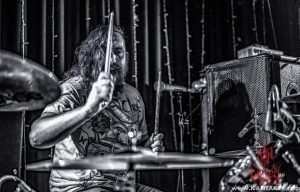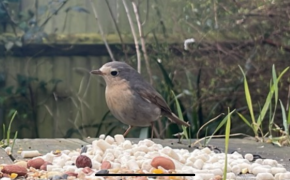Pandiculation: Why do we stretch when we yawn?
Why do we yawn? Much ink has been spilt over this question and astonishingly, given the fact that we can put a man on the moon, we still don’t know why.

Many theories try to explain yawning, but none hold any water. I’ve written about these failings at length elsewhere.
The very fact that yawning occurs throughout the animal world is a fairly good indication that it’s doing something important, but we simply don’t know what.
A behaviour that has received much less attention but is equally mysterious is stretching. Stretching often (but not always) accompanies a yawn. And when they happen at the same time, it’s called pandiculation.
Again, stretching is widespread in nature. In fact, it may be even more widespread than yawning — researchers have seen spiders stretch, but they’re yet to catch them yawning. Aside from its near-ubiquity in the animal kingdom, it starts early in life. Humans have been observed stretching at just 12 weeks into gestation.
So, if evolution has conserved this unusual behaviour, it must be benefiting the animal in some way. But how?
Because of its early start, some scientists have suggested it helps support our muscles, bones, and tendons as they develop. But that doesn’t help explain why we pandiculate our entire lives.
First, how do we describe a stretch? This is from a review:
“[Stretching] is a series of coordinated actions that unfold sequentially, building up soft tissue contractile tension to a peak, at which point the joints of the limbs and trunk are maximally extended — or, alternatively, the trunk is arched in flexion. After the peak, the soft tissue tension level plummets, yielding a sense of pleasure and well-being. The actions can be regional or involve the whole body and are often bilaterally symmetrical.”
The brain and arousal
Although scientists haven’t pinned down a precise location in the brain that handles yawning, it seems to involve the brainstem, which is a primal part of the brain.
Babies born with only the medulla oblongata — which connects the brain stem to the rest of the brain — still yawn. Other regions are also likely involved, including, importantly, the paraventricular nucleus (PVN).
Your hypothalamus helps keep your body on an even keel, monitoring and controlling things like body temperature. The PVN is the motor output of the hypothalamus.
As the motor output, it receives messages from the hypothalamus about what needs to be done to keep things ticking along nicely and takes action.
In the case of yawning and stretching, the PVN appears to orchestrate the response by influencing at least five systems:
- Respiratory: taking a deep breath.
- Cardiovascular: drop in blood pressure.
- Facial motor: mouth opening.
- Spinal motor: trunk stretching.
- Arousal systems: arousal response.
So, we’re getting somewhere towards understanding where and how this strange behaviour originates. But that doesn’t help us understand why.
The importance of pleasure
Physiological things that are essential for the survival of a species are varied, but many share a common trait — they feel good.
A glass of water when you’re parched, a burger when you’re famished, and, of course, sex.
Our brains are hardwired to find life-protecting behaviours pleasurable so that we continue to do them. Importantly for this article, pandiculation feels good.
And the fact that it’s controlled by the PVN alongside other homeostatic drives is another clue that it’s important for maintaining something important within us.
Why though?
The PVN helps maintain homeostasis — balance — in an organism. This includes regulating food intake, heart rate, and blood pressure. This region also controls yawning and stretching, which, as we mentioned, might indicate that it has an important homeostatic role.
The author of the review thinks it might have something to do with the extracellular matrix (ECM). The ECM is a kind of living glue that holds your tissues together. It provides structure and support for our body, and it’s constantly remodelling and reforming itself.
The writers argue that to do this accurately and maintain all the functions our body needs, it has to be stressed in the right ways.
For instance, collagen fibres, which are important structurally, can stick together automatically and at random. This means that if you’re not moving your body, they might stick together in ways that are unhelpful.
Basically, if you don’t do a certain motion, the ECM will slowly deform so that you can no longer carry out that movement even if you want to. They write:
“Pandiculation, with its specific and vigorous muscle activity, might be a means to compensate for the mechanical signals delivered by rest periods and sub-optimal movements.”
So, after long periods of inactivity, a good stretch might help maintain the ECM.
Mechanical forces and the ECM
Cells communicate through chemicals, and via the blood, nerves, and lymph, they can send messages to distant parts of our body.
But there’s more to the function of a cell than chemistry. Cells’ functions can also be distorted or enhanced by mechanical pressures. Physical forces on cells can change their shape. And their shape defines how they work.
For instance, mechanical forces influence the cell’s cytoskeleton — a scaffold of proteins that define its shape. Another good example is bone: physical tension turns on genes responsible for bone growth.
As mentioned before, the ECM binds much of our tissues together. Mechanical forces, once again, help mould its shape and form. And because cells are nestled within or around the ECM, this can influence the shape and form of the whole animal.
The author of the review write:
“In pandiculation, the intense mechanical stimuli produced by forceful co-contraction of antagonist muscle groups might serve as appropriate organizing signals to the cells and tissues by re-optimizing the mechanical conditions of their environment.”
So, stretching may help break abnormal ECM cross-links that build up throughout our bodies during times of inactivity.
Frustration and final thoughts
It’s a shame to end the article on this cliffhanger, but that’s all we have. Whatever the reason(s) behind yawning and stretching, the fact that we share this trait with much of the animal kingdom is quite wonderful.
Before we close this off, I’d like to mention another theory from the author of the review where much of this information came from.
He notes that human adults yawn and stretch much less than adult primates. Culturally, yawning and stretching are frowned upon, especially during conversation.
So, thanks to cultural conditioning, humans often suppress the urge. “Given the likely homeostatic function of SYS,” the author explains, “any such inhibition might contribute to the high incidence of human musculoskeletal disorders.”
Although I think that might be a bit of a stretch (pun intended), next time you’re in a fatally dull business meeting, don’t suppress the urge to pandiculate. If your boss doesn’t like it, explain you are simply protecting the integrity of your ECM and forward them this article.

















